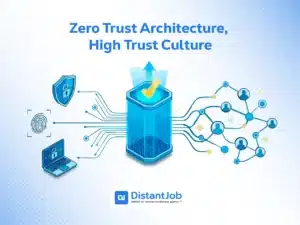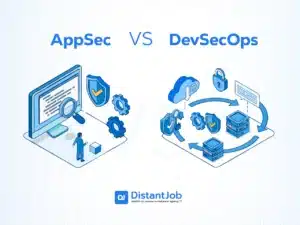The problem with poor software is that it doesn’t just taint your image — you also lose revenue. Software engineering best practices have undergone many changes in recent years. Capers Jones said in 2009 that software engineering needed to discuss many technical issues “to become a legitimate term for an occupation that has been a craft or art form rather than a true engineering field”. Since then, software engineering has evolved to more iterative development processes, flexible and automated.
The best practices in software engineering in 2025 focus on collaboration, continuous delivery, and adaptation to emerging technologies, especially artificial intelligence and machine learning.
We have curated a list of best practices in software development in 2025, along with examples. Whether you’re leading a team of experienced engineers or newbies, these practices can help ensure your project’s success.
Why are Software Engineering Best Practices so Important?
Software engineering best practices are crucial for producing high-quality, reliable, and maintainable software. Agile Project Management is not enough to ensure that software is robust, secure, or can adapt to changing needs over time.
In fact, many software engineers resent Agile. Robert Martin, also known as “Uncle Bob”, author of Clean Code and Clean Architecture, attacks what he and Martin Fowler (co-author of the Agile Manifesto) call “Flaccid Scrum”, which means “Scrum without Software Engineering Best Practices”. According to him, Flaccid Scrum leads to worse productivity overall.
In contrast, these software engineer giants always recommend Extreme Programming, which was an Agile Framework before the Agile Manifesto was even written. Extreme Programming shares many elements with Scrum, while keeping software engineering best practices.
In short, software engineering best practices are unavoidable if you want to develop and deploy the best software.
Seven Essential Practices for Software Engineers to Implement
There are many software development practices that we can’t possibly cover in this piece. But here are seven practical tips to guide your team in 2025.
1. Coding Standards
Maintaining a consistent coding style throughout the project is a best practice for software engineering. It includes meaningful names for variables, functions, and other entities. It also includes proper indentation and dividing complex logic into manageable chunks.
Don’t forget to keep your code clean. A clean code is a robust code that is easy to read and maintain. A robust code handles errors and unexpected situations gracefully. A readable code is a code with proper indentation, clear structure, meaningful names, and consistent formatting. Finally, maintainable code should prioritize ease of understanding for unfamiliar developers.
2. How to Improve Code Quality
To improve code quality, you must understand its three basic principles. DRY, KISS, and YAGNI. DRY means “Don’t Repeat Yourself”; avoid redundant code. Every piece of knowledge or logic within a system should have a single, unambiguous, authoritative representation. In other words, if your bank system already has a deposit function or class, don’t create other deposit functions or classes. It will make a mess.
KISS means “Keep It Simple, Stupid”. Most systems work best if they are kept simple rather than made complex. Avoid unnecessary complexity in your code; only add complexity when really needed.
YAGNI, “You Aren’t Gonna Need It”, advises against adding functionality until it is absolutely necessary. So, if you are planning to create an API that will connect your application to its many microservices while your software is still a modular monolith is not the best idea. Let your grandiose plans have a time to shine later.
3. Version Control Management
When submitting code for review, it is best to make smaller pull requests (PR) or change lists, not larger ones. One of the main reasons for this is that it makes the job of the code reviewer easier.
Nothing is worse as a code reviewer than reviewing 1,000 or 2,000 lines of code. And because reviewing that many lines of code is difficult, it is easier for a bug to introduce itself in the pull request and eventually into the central repository.
Ideally, make your pull request under 200-400 lines for thorough and faster reviews.
Also, it makes it more challenging if the requester eventually has to fix the pull request because some bug made its way into the main code repository. The more codes you have in a PR, the more likely there will be a merge conflict.
This is an especially useful practice if you work at a big company like Google or Facebook, where many engineers work on the same code repository. So, try to err on the side of smaller pull requests.
That might mean the requester has to put in more effort because they’ll have to break up their code into pieces that can be submitted as separate pull requests. But it will go a long way in improving the entire software development process.
4. Implement Thorough Testing Strategies
Integrate various testing types such as integration testing (ensuring parts work together), end-to-end testing (simulating user scenarios), and Test-Driven Development (TDD) (writing tests before code).
For example, writing unit tests is one of the easiest ways to improve code quality. Unit tests focus on small, modular pieces of code to test one functionality at a time. Consider different scenarios, including deliberately making test cases fail to observe behavior, and aim for 100% test coverage.
Run all tests before requesting a review to catch bugs early, as fixing defects in early stages can be significantly cheaper than after release.
Also, don’t forget to automate aspects of testing and review using linters, vulnerability scanners, and tools for checking best practices and coverage. AI tools can significantly streamline code reviews by detecting issues and providing suggestions.
5. Carry Out Effective Code Reviews
Engage in code reviews where another software engineer examines your code or pull request to improve overall code quality, identify bugs, and reduce future optimization work.
Stack related pull requests to separate logically distinct changes, enabling parallel work and more granular feedback. For example, while coding an API, you might feel inclined to split your pull requests into three parts: “Front-End”, “API endpoints and business logic”, and “database and schemas”. In that way, your reviewer might be able to review each snippet with clear intent.
Google researchers found that limiting review sessions to under 60 minutes helps reviewers to maintain focus and accuracy.
Use a code review checklist to standardize the process and ensure checks for functionality, readability, maintainability, security, performance, and coding standards. Maybe the company already has one. Use it.
Document and explain code decisions, including the motivation, alternatives explored, and trade-offs, to provide context for reviewers and future maintenance.
6. Design Patterns
Instead of designing things from scratch, it’s an advisable best practice for software engineers to look for design patterns. A design pattern is a solution template used often to create software. Refactoring Guru compares them to “pre-made blueprints that you can customize to solve a recurring design problem in your code”.
They are not code snippets; they are more like design choices for architectural decisions. While design patterns are more under the scope of software architects, in some companies, there is no architect, so a software engineer must decide for the project. Even if there is an architect, a software engineer must know how to build them.
Design patterns come in three flavors: creational patterns, structural patterns, and behavioral patterns. Creational patterns create reusable objects, structural patterns connect different objects, and behavioral patterns assign objects with roles and responsibilities.
7. Optimization and Performance Practices
There are many best practices to optimize and add performance to your software. Among them, it’s worth noting:
- Asynchronous Jobs
- Cache-Aside Patterns
- Parallelism and Concurrence
- SQL Performance and Optimization
- Content Distribution Network (CDN)
Asynchronous Jobs
Asynchronous jobs are tasks that run independently and concurrently, without blocking other processes. They aim for more efficient use of system resources and a more responsive user experience. Instead of waiting for one operation to complete before starting another, asynchronous programming enables multiple tasks to proceed simultaneously.
Cache-Aside Patterns
Applications use a cache to deliver information and data held in databases. That being said, cached data won’t always match the real data stored in the database. A cache-aside pattern is a strategy to update the cache, to keep it relevant and reduce database overhead.
Parallelism and Concurrence
Concurrency is when multiple threads can be paused and resumed. In other words, it’s when a CPU pauses one task to prioritize another. Parallelism is when tasks are running on multiple cores (a quad-core CPU means four tasks running at the same time). Pausing parts of the application while allowing the meaningful ones to run optimizes performance.
SQL Performance and Optimization
Optimizing SQL performance is key to guaranteeing SQL queries are as fast and smooth as possible, improving performance on any database that uses a relational database. This is especially concerning when dealing with Big Data, where many tables might have millions of rows.
Content Distribution Network (CDN)
A Content Distribution Network (CDN) is a server cluster distributed worldwide. They store cache content near the end user, making access to the services easier and faster. Important websites use this performance practice, such as Amazon, Facebook, Google, and Netflix.
Don’t Overly Optimize or Modularize Upfront
You complicate the code and risk improving runtime inconsequentially when you optimize early. Instead, get a clean, clear algorithm and prioritize it later. Similarly, trying to make the system modular and extensible should be done moderately. Wait until a need arises, or you risk making the wrong interfaces and wasting time and resources.
Conclusion
Software engineering best practices can help you build maintainable, scalable, and secure software products.
We have shared seven software engineering practices that can enhance the outcome of your software projects. However, this is not an exhaustive list. The technology industry constantly evolves, so it can be tricky to keep up with the latest trends, especially when you’re looking for talent.
That’s where we can help at DistantJob. We can help you find and vet potential hires to ensure they stay up-to-date with industry trends. Our culture-centric approach ensures that the candidates not only have the technical skills but also fit well into your company’s culture.
In addition, we take care of all the HR processes, from finding suitable candidates to onboarding them. This enables you to focus on building your software products and growing your business. Ready to get started? Contact us!





